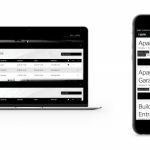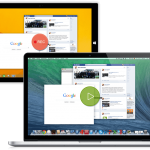How I’ve Learned To Hire Remote Employees (And Not Regret It Later)
It’s getting more common to hear of startups composed of team members who’ve never actually met–in fact, I’m founding one right now. If the future of work is remote, getting there will mean figuring out how to hire people you may never be in the same room with, from countries you’ve never been to.
For me, that challenge is already proving worth the tackling. I don’t pay for an office for anyone–I work out of my home, or from coffee shops or the hotels I’m staying at when I travel, which I can do whenever I like. I don’t need to incentivize employees with in-office perks like games, snacks, or happy hours. By default, I’m able to offer my employees extreme amounts of flex time; since we’re already in different time zones, setting hours wouldn’t make much sense in the first place.
In the “challenges” column, though, I’d add a bunch of communications issues. I’m constantly trying to be proactive about preventing them. There are times when we do schedule calls, but because of the time differences, one team member or another often misses it out of confusion. If someone’s internet connection goes down, they’re usually forced to take a day off if they can’t relocate.
But these are all day-to-day headaches that come up after someone has joined the company. By far the hardest part is finding great people to work for me to begin with. Here’s how I’ve learned to hire remote employees efficiently and effectively.
Ask For Several Samples–And A Demo
I always ask for work samples pretty much right away. I think of this process as a forced “blind” interview. While I might be tempted to judge a candidate from their first impression in person, and the gut feeling they elicit when we talk, when I’m looking for remote candidates all I have to evaluate them with is the quality of their work.
But because I can’t go over their work with them in the same room and gauge their reaction, I also take the precaution of asking for a real-time, remote demo. This helps me prove that they’re submitting their own work, not someone else’s. While it’s rare to find someone who applies for a job with work they obviously can’t replicate, my personal experience has shown that, while rare, it’s a somewhat bigger threat for remote offices.
Be (Very) Specific In Job Descriptions
Yes, it’s still important that you write fair, unbiased job descriptions, just as with any company. Every hiring process benefits from a clear, honest characterization of the role that gives every qualified applicant a fair shot.
But I’ve found there are some extra bits of information that it’s wise to include for a fully remote job posting, including the hours you expect them to be available online, and a thorough description of your company culture (or the culture you’re in the process of building).
Including the hours they’re meant to be available helps deter those who are considering committing themselves to more than one job, which is generally only a danger when the applicant is new to remote work and giddy with the newfound sense of freedom. Explaining your culture is just as key (but easy to forget about), since it helps you specify what kind of personality you’re looking for.
If there are any other specifics you’re looking for, make sure to be very clear about them in your posting. I’ve found that the remote hiring process is tougher on me than I’d first expected–there are a lot of judgment calls to make and fewer tools with which to make them–so I’ve tried to give myself a leg up by making sure applicant knows exactly what I’m looking for.
Insist On A Trial Period
There are so many factors that are seemingly impossible to interview for, especially remotely: Can the candidate motivate themselves as a remote worker? Are they really going to be as easy to contact as I want them to be? Are they going to burn out?
Because of this, I like to book my candidates for a paid trial period–usually a week, but if I’m hiring someone a little higher up, I’ll ask for up to a month. This isn’t always feasible if they have a day job, of course. But they’re often happy to do it, at least part-time. This isn’t a perfect system, but it gives me a much more in-depth chance to see how they function as an employee over the long-term. And just as important, it also gives the candidate a chance to see exactly what their days will look like, which means there are fewer surprises for both parties once they’re hired full-time.
Hiring a full-time remote employee or contractor can be daunting. You’re committing to paying a person you’ve never met to deliver a product day in and day out, and to many, that may feel a bit too much like gambling. But in my experience, once you’ve gotten the hang of it, running a virtual office is worthwhile. You and your teammates will have much more freedom to sleep when you prefer, work in whatever place inspires you, and travel when you want to. Who could really ask for more?
AJ Agrawal is an entrepreneur, growth marketer, and management consultant. A frequent traveler, he writes about the leadership and marketing lessons he’s picked up while traveling the world. Follow AJ on Twitter at @ajagrawal24.
Fast Company , Read Full Story
(59)














